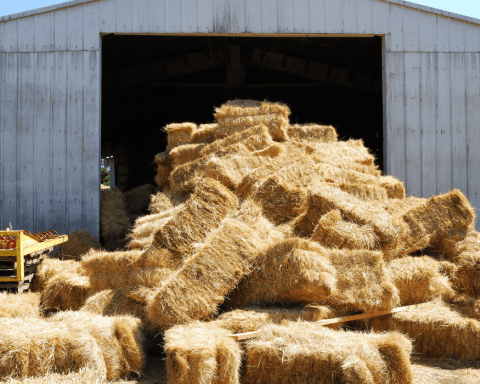A few years before the pandemic, the owners of a Victoria, B.C., golf course decided they no longer wanted to operate the facility, but nor did they want to follow in the tracks of many other such sites, which have been redeveloped into subdivisions and manicured parks. Rather, the owners leased the site to a B.C. non-profit, Power To Be, which runs programs that enable people with disabilities to connect with nature.
In 2017, Power To Be invited architects to propose ideas for a program base camp. Victoria-based Christine Lintott, who is one of only about a hundred certified “biomimicry professionals” practising around the globe, got the job with a plan to let nature reclaim the golf course. The new facility, completed last year, aims to be a “living building” that fits seamlessly into the 80 acres of wilderness now surrounding it.
“The building is intended to do things like sequester carbon, create habitat, filter water and air, and perform other ecological functions,” says Lintott. Her firm is also in the process of developing a sound management system for the building that, she says, “is inspired by the frequency-absorbing architectures of the scales of moth wings, reeds and snow.”
Biomimicry isn’t an architectural school of thought per se so much as a philosophy about what the human world can learn from nature to inform the design of materials, machines or buildings. Some of the most famous examples include Velcro (inspired by burrs) and Olympic swimsuits made from a fabric that mimics shark skin. Biomimicry’s best-known exponent is a U.S. biologist named Janine Benyus, whose 1997 bestseller, Biomimicry: Innovation Inspired by Nature, helped spawn an international movement aimed at drawing on the innate innovation of natural systems as a means of envisioning less wasteful products, materials, engineered systems and urban spaces.
“When a city [or building] is functionally indistinguishable from the forest or wildlands next door, we’ve reached true sustainability,” wrote Benyus, who collaborated with Interface to make the flooring company’s factories function more like forests and with the U.S. Coast Guard to create a headquarters that helps filter water off its cascading green roof like a beaver dam.
As ArchDaily noted, the “‘biomimetic revolution is now considered to be a major guideline towards more sustainable built environments, meaning that buildings are focused on learning from nature rather than only extracting elements from it.” Biomimetic buildings pop up where you’d least expect them, including at the new Pinal County Attorney’s Office, in Arizona, which draws on insights about how saguaro cacti deflect intense solar heat with a vertically corrugated skin texture that protects the plant from sunburn. Similarly, the building’s exterior walls and windows are shielded from direct sun by adjustable fins and ribbed metal panelling, which should result in an estimated 39% energy savings compared to other buildings in the region.
The British architect Michael Pawlyn, founder of Exploration Architecture and the author of Biomimicry in Architecture, points out that three decades of sustainable design (LEED, etc.) have done little to reduce building-related carbon. Can mimicking nature finally get buildings, and with them cities, to bridge that gap?
“I sincerely believe that learning from the way the planet Earth works, and using biomimicry to help us rethink things, is going to be an essential part of getting to the ultimate aim, which is humans co-evolving with nature,” Pawlyn tells Corporate Knights from London. “We need to learn to integrate everything we do as humans into the web of life that supports us.”
To translate these abstractions into the practical business of erecting buildings, Pawlyn, who studied life sciences before going into architecture, includes biologists and ecologists on design teams. They look at ways of adapting a building to hug the topography of a site, or using natural materials found on a property to produce components like insulation.
Pawlyn has developed a number of concept designs, including one for a biomimetic office building and a biosphere built in the U.K. to mark the millennium. The Eden Project’s architecture drew on insights about dragonfly wings to create transparent domes using a minimal amount of steel and glass. “What we found was that within the middle of the wing, you get quite regular hexagons,” he says. “That field of hexagons joins the more structural elements attaching the wing back to the body of the insect [at right angles].” The durability of the wing’s design provided the inspiration for making lighter and stronger steel joints.
The most famous example of biomimetic design is an office building in Harare, Zimbabwe, known as the Eastgate Centre, built in 1997. The building’s ventilation system is directly inspired by the termite mounds common in that part of sub-Saharan Africa. These mounds feature holes on the exterior surface that force hot air to rise and escape, leaving the interior at the temperature required for the termites’ food source, a fungus. The Eastgate Centre’s air circulation uses a similar approach, allowing the building to function without heating or cooling systems.

“That’s a great building modelled quite literally on the local environment,” says Ian Clarke, an associate professor of biology and sustainability at OCAD University in Toronto. He describes the approach biomimicry brings as a kind of question for architects and planners: “How do we change the process so we can mimic ecosystem thinking in our design?” The approach, he adds, means eschewing architectural iconography – that is, signature buildings that strive to showcase renewable energy or natural materials without a wider natural context.
A critical step, Clarke says, is to avoid the trap of looking for new technologies or materials to deliver the desired goal. In the world of biomimicry, professionals like Pawlyn and Lintott attach a great deal of importance to concepts like designing adaptable buildings that can evolve as their uses change, and also using adaptable materials, especially waste, which doesn’t exist in nature. “Waste is not a concept,” Lintott says. “Everything is a material stream. Everything is a nutrient.”
At the Power To Be base camp, Lintott uses regeneration as a guiding principle. “We’re really at the point of saying, ‘Were we successful? Have we created a net-positive or a regenerative landscape in our built environment solution that is performing ecologically better than the disturbed site that we inherited?’”
Pawlyn agrees that the fundamental goal of architecture in the age of climate crisis must go beyond technical measures of sustainability and aspire to regenerate – that is, design in ways that don’t merely limit harm but benefit the surrounding ecosystem. “Regenerative design is about getting above that line of neutrality into the realm of actually having a positive impact in everything we do.”
Have we created a net-positive or a regenerative landscape that is performing ecologically better than the site that we inherited?
—Christine Lintott, architect
Engineering professor Marjan Eggermont, associate dean of sustainability at the University of Calgary and a co-founder of Biomimicry Alberta, says advances in building and material science have been inspired by this kind of thinking. She mentions emerging insights into the source of strength in certain seashells, whose microscopic structure reveals a layering of harder and softer sediments that combine to produce an extremely resilient material.
“There’s less breakage,” she says. “If there is a crack, it propagates through the layer, not through the hole – horizontally rather than vertically.” The applications include reducing the amount of carbon-intensive building material needed for a project. “You can start to include patterning and layering in the way a wall is put together ... so you’re not using as much material.”
The real question is whether biomimetic design – which, despite the hype, is not yet a mainstream approach to architecture – delivers real sustainability benefits or if it is yet another fad, to be added to an ever-growing pile.
Some recent research suggests that biomimetic design is more than merely a buzzy way of talking about eco-friendly buildings. Clean Technologies and Environmental Policy journal found that biomimetic design approaches to building facades and envelopes result in improved energy efficiency and reduced carbon. A 2022 analysis of nine office buildings whose facades were created using biomimetic approaches – the design inspiration for these projects included everything from cacti surfaces to the iridescence of mollusk shells – found that these structures achieved energy savings that ranged from 20% to more than 95%.
While biomimetic design can involve complex engineering that aims to replicate natural processes that have evolved over millions of years, Lintott, in her own practice, also believes many of these principles involve foundational ideas, like durability, adaptability, an appreciation of vernacular forms, and respect for common materials. “We’re thinking in an evolutionary time scale,” she says. “If I get the bones of the buildings right, they’ll endure.”





